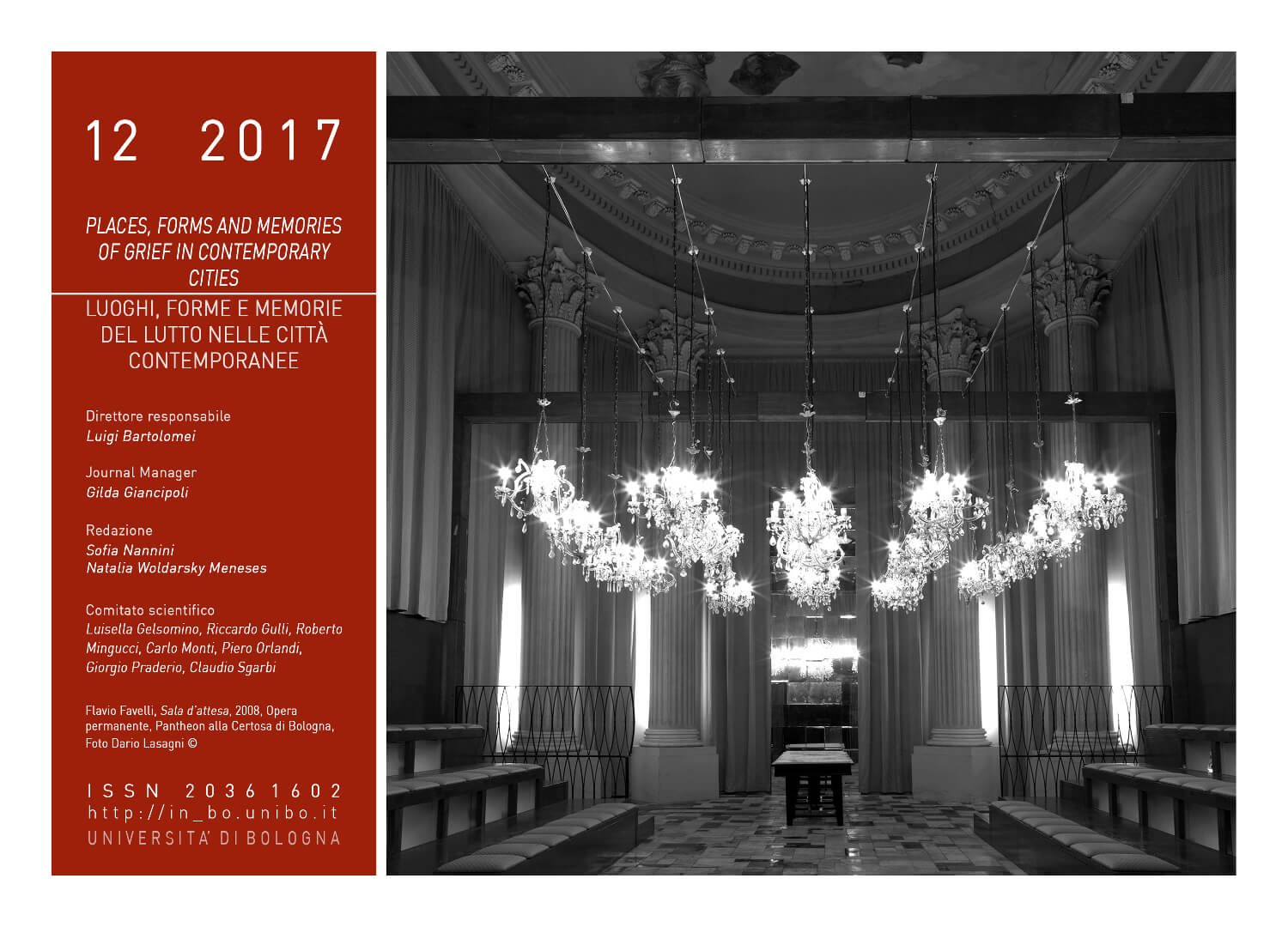Bruno Taut, Metteur en Scène of Mustafa Kemal Atatűrk Catafalque
DOI:
https://doi.org/10.6092/issn.2036-1602/7849Keywords:
Modern Turkey, Muslim tradition, German architecture, Central-Europe culture, Architectural form, Spiritual formAbstract
When Bruno Taut arrived in Turkey in 1936, exiled from Nazi Germany, his fame preceded him. In just two years of activity, the German architect gained the president Atatűrk’s full trust. On November 10th 1938 the charismatic Turkish leader suddenly dies and Taut is appointed for designing the catafalque for the solemn state funeral. He lived the task as an honour for which he did not want any remuneration; although very ill he did not hesitate to fly to Ankara working all night on the project in a hotel room. The catafalque, which conciliated sobriety and Muslim tradition, was set in front of the Parliament building under careful supervision of the architect. It was a stage on which a tragic collective drama was taking place; thousands of Turks will relate forever the iconic figure of their President to the urban scenic design of the German architect.References
F. Ahmad, The making of Modern Turkey, Routledge, London and New York, 1993
I. Aslanoğlu, “Evaluation of architectural developments in Turkey within the socio-economic and cultural framework of the 1923-1938 period”, in METU Journal of Faculty of Architecture, Middle East Technical University, 1986, 7, pp. 15-41
AA. VV., Bruno Taut 1880-1938, catalogo della Mostra, Akademie der Kűnste, Berlino, 1980
AA. VV., Turkiye’ de Mimar ve Ogretmen 1936-38 (Architettura e insegnamento in Turchia 1936-‘38), Accademia di Belle Arti di Berlino/Istituto tedesco di Cultura in Turchia, Berlino e Istanbul, 1982
AA.VV., Thinking of Ataturk: the Catafalque and Anitkabir. Two architects: Bruno Taut and Emin Onat, ITU – Istanbul Technical University, Istanbul, 1998
A. Batur, To be modern: search for a republican architecture, in R. Holod, A. Evin (a cura di), Modern Turkish architecture, University of Pennsylvania Press, Philadelphia, 1984, pp. 68-93
S. Bozdoğan, Modern Architecture and Cultural Politics of Nationalism in early republican Turkey, in Artistic Exchange- Proceedings of the 28th international Congress of History of art, Akademie Verlag, Berlin, 1993, pp. 437-452
S. Bozdoğan, Rethinking Modernity and national identity in Turkey, University of Washington Press, Washington, 1997
S. Bozdoğan, Modernism and nation-building: Turkish architectural culture in the early Republic-Studies in Modernity and national identity, University of Washington Press, 2001
S. Bozdoğan, Art and Architecture in Modern Turkey: the Republican period, in R.Kasaba, The Cambridge History of Turkey: Turkey in the Modern World, Cambridge University Press, Cambridge, 2008, pp. 419-471
R. Günsel. C. M. Kortepeter (a cura di), The transformation of Turkish culture – The Atatürk legacy, the Kingston Press, Princeton, 1986
K. Hartmann, “Bruno Taut im tűrkishen Exil“, in Der Architekt, 1992, 2, pp. 111-117
M. Heper, A. Oncu, H. Kramer (a cura di), Turkey and the West: changing political and cultural identities, Taurus & Co., London and New York, 1993
A. Kazancigil, E. Ozbudun (a cura di), Atatürk. Founder of a modern State, Archon, Connecticut, 1981
B. Nicolai, Moderne und Exil. Deutschsprachige Architekten in der Türkei 1925 – 1955, Verlag für Bauwesen, Berlin, 1998
B. Nicolai, Der neue Bruno Taut – die neue Türkei, Zur Transformation der modernen Architektur 1936-38 in M. Speidel (a cura di) Bruno Taut, Natur und Phantasie, Ernst & Sohn, Berlin, 1995, pp. 317-328
B. Nicolai, L’esilio. L’architettura di Bruno Taut e la Turchia kemalista del 1936-’38 in W. Nerdinger (a cura di) Bruno Taut 1880-1938, Electa, Milano, 2001, pp. 192-207
P. Portoghesi, Bruno Taut: architettura e natura, in G. D. Salotti, M. A. Manfredini (a cura di), Bruno Taut. Der Weltbaumeister. L’interno e la rappresentazione nelle ricerche verso un’architettura di vetro, Franco Angeli, Milano 1998, pp. 101-107
M. Speidel, Natűrlichkeit und Freiheit, Bruno Taut in der Tűrkei, in B. Cimen (a cura di) Architektur in Ankara 1923-1950, Ankara 1994, pp. 60-65
M. Speidel (a cura di) Bruno Taut, Natur und Phantasie, Ernst & Sohn, Berlin, 1995
M. Speidel, L’opera giovanile variazioni sui prospetti, in W. Nerdinger (a cura di), Bruno Taut 1880-1938, Electa, Milano, 2001, pp. 24-40
B. Taut, Mimari Bilgisi (Lezioni di Architettura), Accademia di Belle Arti Istanbul, Istanbul, 1938
B. Taut, “Turk Evi, Sinan”, in Her Ay, Edebiyat ve Sanat, 1938, Feb./1, pp. 93-98
B. Taut, Istanbul Journal, taccuino personale, 10.09.1936-13.12.1838, copia conservata presso AdK Architektur Archiv Akademie der Künste, Berlin, originale nell’Archivio Iwanami, Tokyo
B. Taut, Ansprache zur Eröffnung der Taut-Ausstellung in Istanbul, 4 giugno, originale presso AdK Architektur Archiv Akademie der Künste, Berlin
Christopher S. Wilson, Beyond Anitkabir: The funerary architecture of Atatűrk. The construction and maintenance of national memory. Routledge, London and New York, 2013
Downloads
Published
How to Cite
Issue
Section
License
Copyright (c) 2018 Paola Ardizzola
Copyrights and publishing rights of all the texts on this journal belong to the respective authors without restrictions.
This journal is licensed under a Creative Commons Attribution-NonCommercial 4.0 International License (full legal code).
See also our Open Access Policy.
Metadata
All the metadata of the published material is released in the public domain and may be used by anyone free of charge. This includes references.
Metadata — including references — may be re-used in any medium without prior permission for both not-for-profit and for-profit purposes. We kindly ask users to provide a link to the original metadata record.







